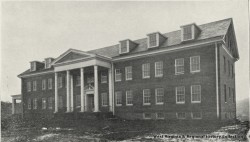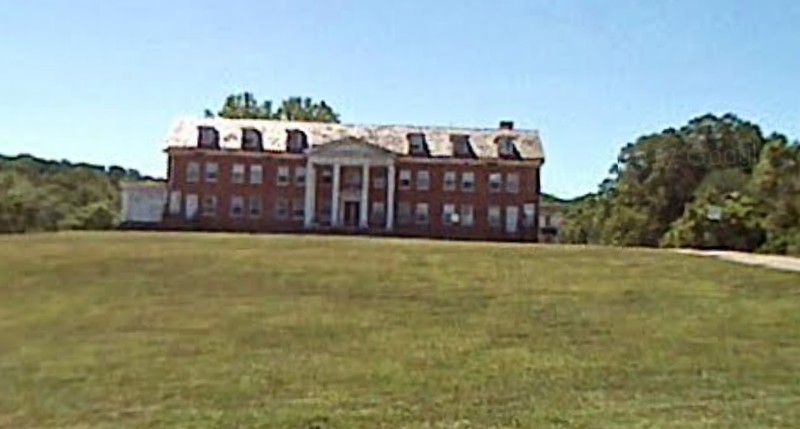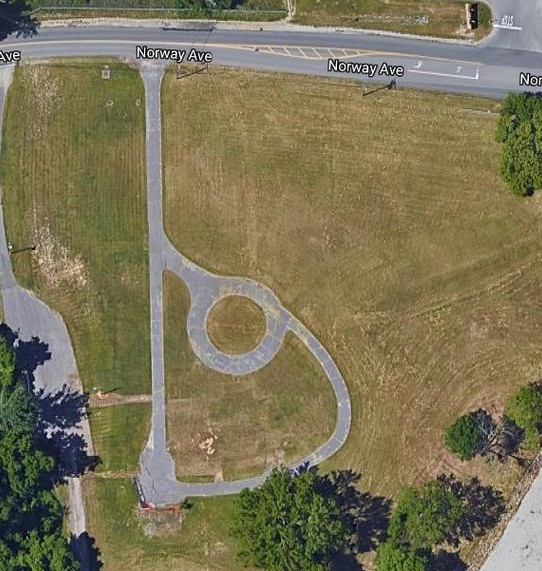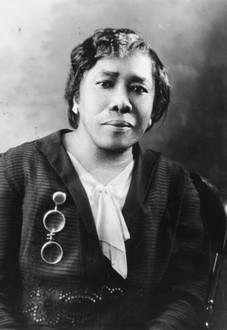West Virginia State Industrial Home for Colored Girls (1925-1956)
Introduction
Text-to-speech Audio
Images
The West Virginia Industrial Home for Colored Girls was located down the road from the West Virginia Home for Colored Children, but still on the same-owned property. The building stood vacant until 2010, when it was demolished by Marshall University.

The street-view of the Industrial Home shows the vacant home before it was demolished.

The satellite-view of the Industrial Home shows the land where the home once sat. Since demolition, the land has remained vacant, but is still property of Marshall University.

Fannie Carter was the first Superintendent of the Industrial Home for Colored Girls

Backstory and Context
Text-to-speech Audio
This reform school for African American girls opened in 1925 and Fannie Cobb Carter served as the first superintendent for ten years. The curriculum reflected the limited options for girls with lessons on domestic skills and limited coursework until the 1930s when academic work became supervised partially under the Cabell County Board of Education. Two certified teachers were sent to the homes, and those who desired additional schooling could take advantage of the board-provided transportation to Douglas High School, the school open to African American students in Huntington.2
In the following years, the West Virginia Industrial Home for Colored Girls would remain under the leadership of Cabell County Schools until it was closed in 1956. After many years of serving as housing and storage for Marshall University, the building was demolished in 2010.
The most significant person associated with the reformatory school is its first superintendent, Fannie Cobb, who later became the director of adult education for for African Americans in Kanawha County. In 1945, she became the dean of women at the National Trade and Professional School for Women and Girls in Washington D.C. and later became president of that institution. Carter stayed active in the community and for promoting education and civil rights until her death at age 100 in 1973. For her contributions to African American education and heritage, Charleston Mayor John G. Hutchinson proclaimed June 11th, 1977 as "Fannie Cobb Carter Day."
Sources
Casto, J.E. Historic Site was Orphan Home. The Herald-Dispatch. September 30, 2008. Accessed November 14, 2017. http://www.herald-dispatch.com/news/recent_news/historic-site-was-orphan-home/article_4b0208c7-f78e-...
Spurlock, T., Whetsell, R. Documentation of West Virginia Colored Orphan's Home: Cabell County, West Virginia. Cabell County Schools. 2010. Accessed November 14, 2017. https://www.cabellschools.com/UserFiles/Servers/Server_17437/File/About/about%20district/WVCOH_Full_CRA_Report.pdf
State Industrial Home for Colored GIrls. Asylum Projects. July 20, 2013. Accessed November 14, 2017. http://www.asylumprojects.org/index.php?title=State_Industrial_Home_for_Colored_Girls
"Fannie Cobb Carter," accessed July 31, 2017 http://www.wvencyclopedia.org/articles/990
